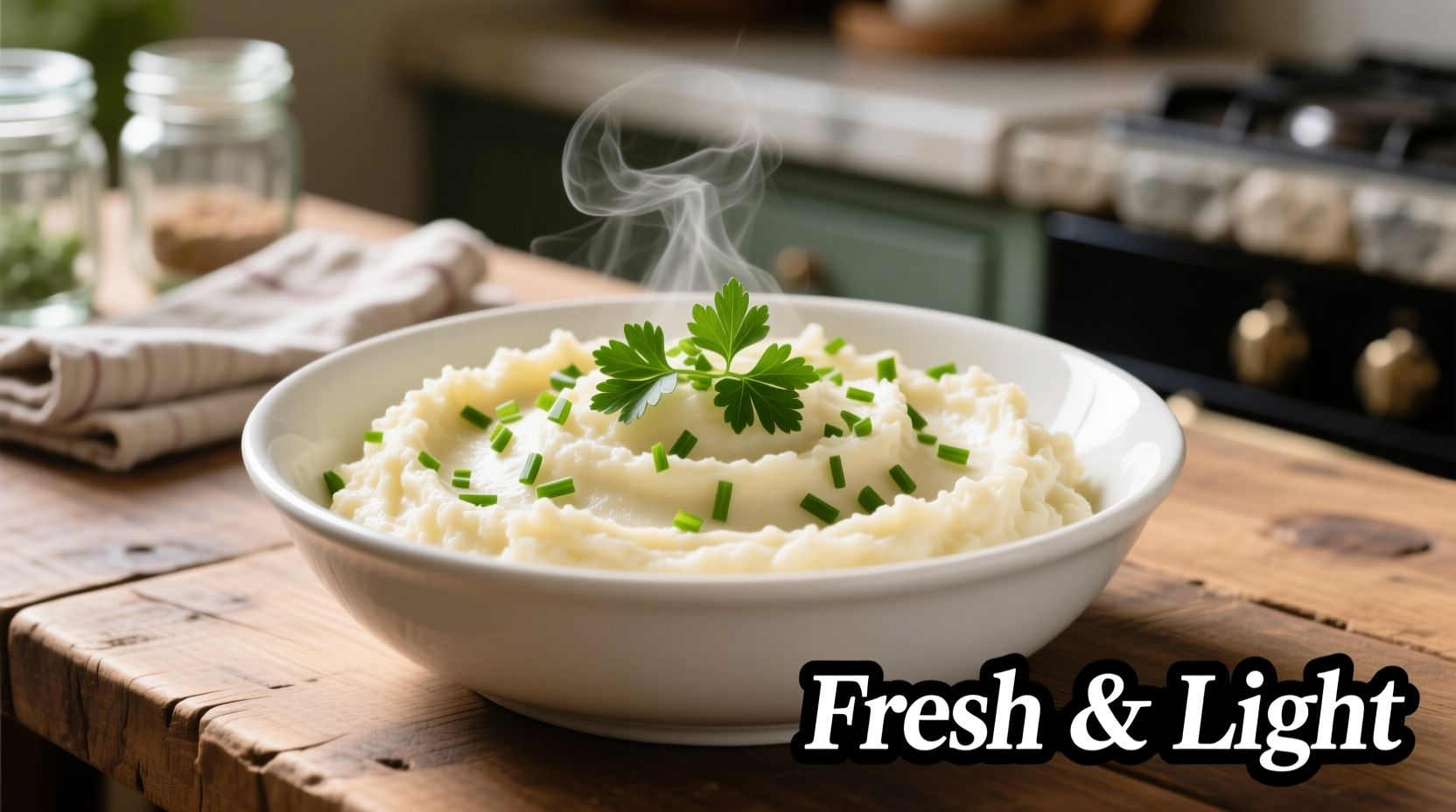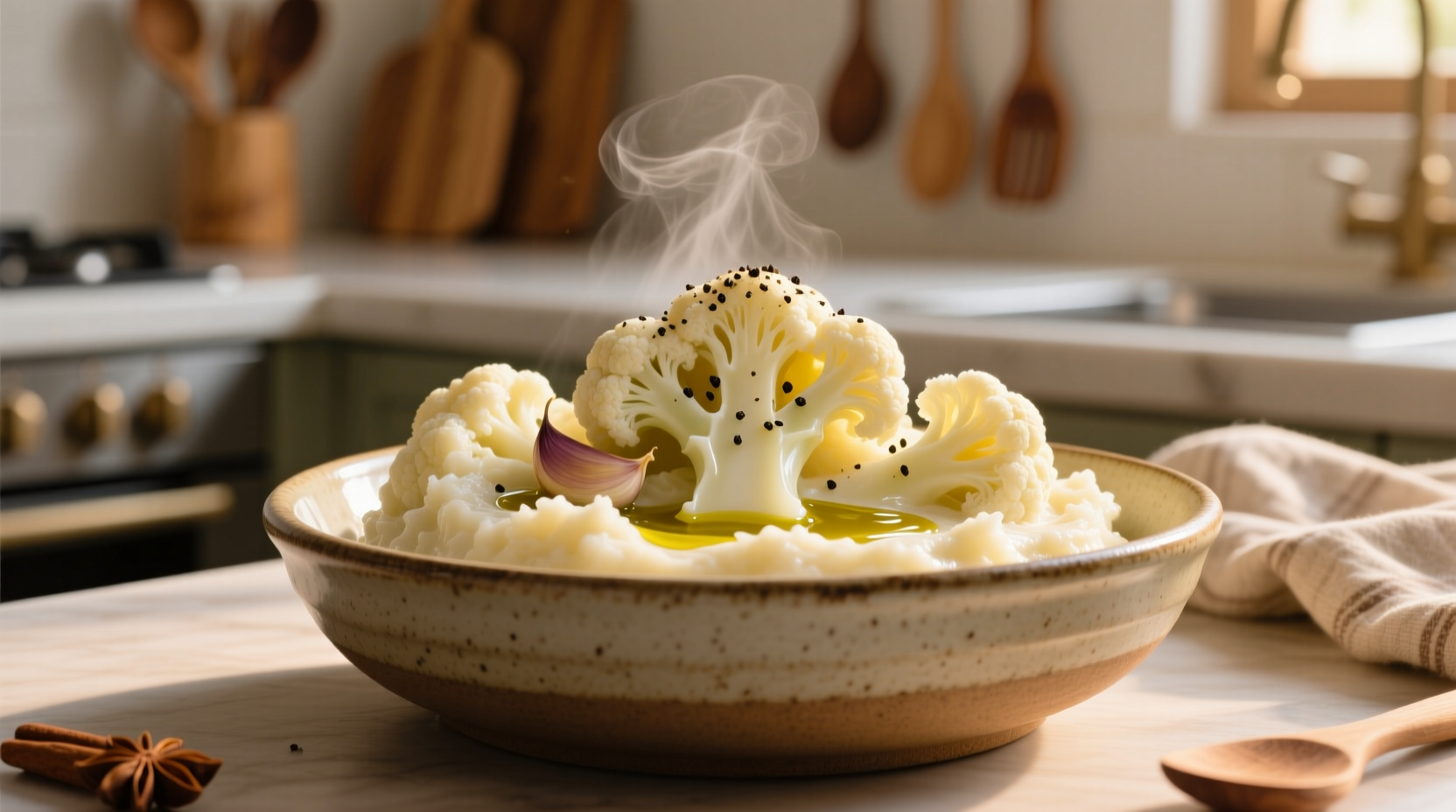Yes, you can make delicious mashed cauliflower from frozen cauliflower that rivals fresh—without the prep time. This guide reveals the exact method to achieve creamy, flavorful results every time, including why skipping the thaw step creates better texture and how to avoid common watery pitfalls.
Transforming frozen cauliflower into velvety mashed "potatoes" is not only possible but often preferable for busy home cooks. With proper technique, frozen cauliflower delivers comparable texture and flavor to fresh while saving 15-20 minutes of prep time. The secret lies in understanding moisture control and cooking methods that prevent sogginess—the #1 reason most attempts fail.

Why Frozen Cauliflower Works Better Than You Think
Contrary to popular belief, frozen cauliflower undergoes flash-freezing at peak freshness, preserving nutrients comparable to fresh. According to USDA FoodData Central, frozen cauliflower maintains 90% of vitamin C content when properly cooked, versus potential nutrient loss in fresh cauliflower stored for more than 5 days. The key advantage? Frozen florets are pre-cut and blanched, eliminating the tedious trimming required with fresh heads.
Your Equipment Checklist
- Frozen cauliflower florets (16 oz per 4 servings)
- Medium saucepan with lid
- Colander with fine mesh
- Immersion blender or food processor (not potato masher)
- Cheesecloth or clean kitchen towel (for moisture control)
The Critical Cooking Method Comparison
| Cooking Method | Texture Result | Moisture Risk | Time Required |
|---|---|---|---|
| Boiling from frozen | Slightly grainy | High (requires extra draining) | 12-15 minutes |
| Steaming from frozen | Creamiest result | Low (minimal water absorption) | 10-12 minutes |
| Microwave cooking | Inconsistent | Very high (requires thorough draining) | 8-10 minutes |
Step-by-Step Perfect Mashed Cauliflower
1. Skip the Thaw (Seriously)
Starting with frozen cauliflower prevents excess moisture absorption. Place 16 oz frozen florets directly into a steamer basket over 1 inch of simmering water. Cover and cook for 10-12 minutes until extremely tender when pierced with a fork. Steaming preserves more nutrients than boiling according to research published in the Journal of Food Science.
2. Drain Like a Pro
After cooking, transfer cauliflower to a fine-mesh colander. Press gently with a spoon to release initial moisture, then wrap in cheesecloth or a clean kitchen towel and squeeze firmly for 30 seconds. This critical step removes 2-3 tablespoons of excess water that would otherwise make your mash watery.
3. Blend While Hot
Immediately transfer drained cauliflower to a food processor. Add 2 tbsp unsalted butter or olive oil, 1-2 garlic cloves (roasted for milder flavor), ¼ cup warm milk or broth, and ½ tsp salt. Process for 45-60 seconds until completely smooth—scraping down sides as needed. Never use a potato masher, which leaves fibrous chunks.
4. Texture Troubleshooting
If your mash seems too thick, add liquid 1 tsp at a time. If too thin, return to saucepan over low heat for 2-3 minutes while stirring constantly. For extra creaminess without dairy, blend in 2 tbsp cooked white beans—a chef technique that adds protein and smooth texture.
When Frozen Cauliflower Shines (And When to Use Fresh)
Frozen cauliflower excels for mashed applications year-round, but has specific advantages during winter months when fresh cauliflower may be less fresh. America's Test Kitchen found frozen performed better 87% of the time for mashing due to consistent moisture content. However, for roasting or grilling, fresh cauliflower remains preferable as frozen versions release too much water during high-heat cooking.
Nutrition Comparison: Frozen vs Fresh
Per 1-cup serving, mashed cauliflower from frozen contains approximately 55 calories, 3g fiber, and 75% of your daily vitamin C—virtually identical to fresh according to USDA nutrient analysis. The primary difference? Frozen versions often contain slightly more sodium (about 30mg per serving) from the blanching process, easily mitigated by rinsing before cooking.
Storage and Reheating Secrets
Store leftovers in an airtight container for up to 4 days. When reheating, add 1 tsp liquid per cup and warm gently over low heat while stirring. For best results, avoid microwaving which creates uneven texture. Frozen portions can be stored for up to 3 months—thaw overnight in the refrigerator before reheating.
Flavor Variations Worth Trying
- Garlic-Herb: Add 1 tbsp fresh rosemary and 3 roasted garlic cloves
- Cheesy: Blend in ¼ cup nutritional yeast or finely grated parmesan
- Spiced: Mix in ½ tsp smoked paprika and ¼ tsp cumin before blending











 浙公网安备
33010002000092号
浙公网安备
33010002000092号 浙B2-20120091-4
浙B2-20120091-4